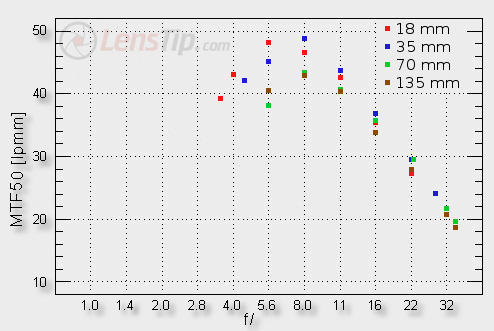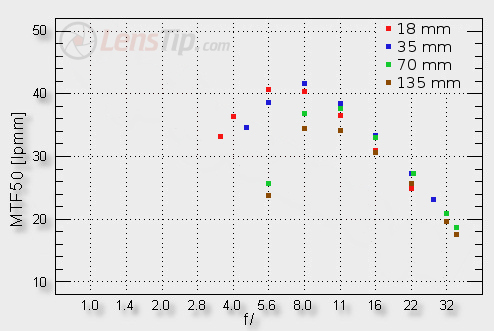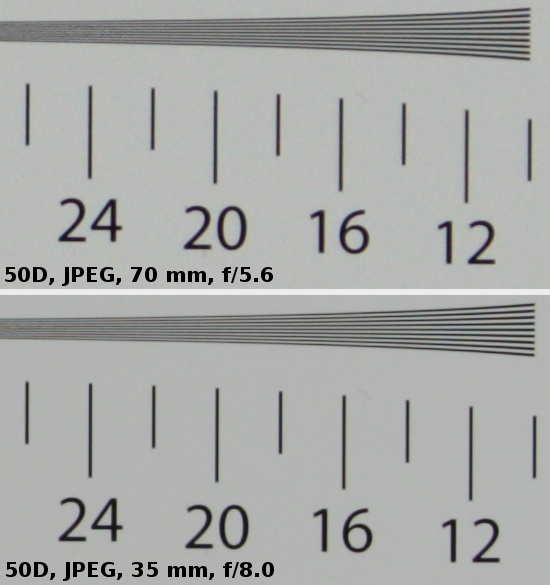Canon EF-S 18-135 mm f/3.5-5.6 IS
4. Image resolution
Now let’s check how the lens fares in the frame centre. The graph below will allow us to assess its performance.

Please Support UsIf you enjoy our reviews and articles, and you want us to continue our work please, support our website by donating through PayPal. The funds are going to be used for paying our editorial team, renting servers, and equipping our testing studio; only that way we will be able to continue providing you interesting content for free. |
- - - - - - - - - - - - - - - - - - - - - - - - - - - - - - - - - - - - - - - - - - - - - - - -
For such a cheap, low-end construction the result is really very positive. Even at the maximum relative aperture and all focal lengths the lens doesn’t have the slightest problems with exceeding the decency level; what’s more it does it in a decisive manner. The MTFs, reached there, range from 38-42 lpmm, allowing us to take fully sharp photos.
On stopping down by 1 EV we start to come closer to values near 50 lpmm but only at shorter focal lengths. The longer end is too slow to manage such a task. The combination of optical aberrations still distinct at that point, and the increasing influence of diffraction makes it difficult for the 70-135 mm range to reach higher than 43 lpmm. Perhaps this result won’t bowl you over but certainly the tested lens shouldn’t be ashamed of it.
Usually lenses with a wide range of focal lengths fared very well in the frame centre but were weaker at the edge. Let’s check how the situation looks like on the edge of the frame for the tested Canon 18-135 mm IS.

At shorter focal lengths you shouldn’t complain at all. Even at the maximum relative aperture we still are on the border of the decency level and when it comes to a cheap, amateur construction it is a positive sign. The situation at the longer focal lengths is the price we must pay for such a good performance, though. At the maximum relative aperture the image is hardly good; only after stopping down the aperture to f/8.0 it becomes truly useful.
At the end of this chapter we would like to present our test chart crops taken from JPEG files, which were saved along RAW files, used for the analysis above.
 |






